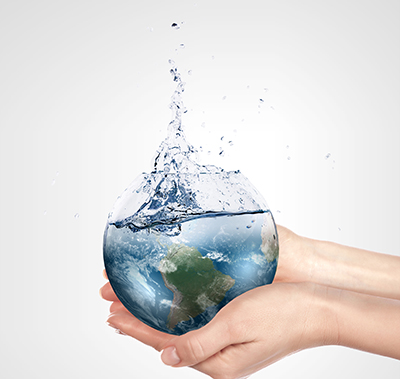Delaware • New Jersey • Pennsylvania
New York • United States of America
 |
In 2022, Earth Day celebrates 52 years of environmental awareness, education and action, highlighting ways we can all work as partners to protect and improve our natural resources, especially our water resources. This year's theme is Invest in Our Planet.
Discover more: https://www.earthday.org/
In the Delaware River Basin, people have been taking care of our lands and waters for thousands of years. The themes of collaboration, partnership and working together are not new.
The Lenni Lenape, Munsee Lenape and Nanticoke were some of the largest indigenous populations in the Basin. Their names for rivers, creeks and places still exist today: Lackawaxen, Neshaminy, Pequest, Tohickon, Rancocas, Musconetcong, Pocono, Conshohocken, Wissahickon, Assunpink, Wickecheoke, Paunacussing, Pepacton and Neversink. This is just a small sampling.
Discover more: https://native-land.ca/
Moving forward, as cities developed, populations grew and industry took hold, people started to be concerned about the state of our waterways. In 1739, Ben Franklin petitioned Philadelphia's government to prohibit local tanneries from dumping waste into a tributary of the Delaware River. Upon his death in 1790, Franklin willed the city 100,000 pounds to develop an abundant supply of water to "insure the health, comfort and preservation of the citizens." The Fairmount Water Works started providing drinking water to Philadelphia in 1815 and did so for the next 100 years.
By the early-mid twentieth century, governments recognized that there were serious water quality issues that needed everyone to work jointly to improve. The DRBC was formed in 1961, the EPA in 1970 (and the first Earth Day), and the Clean Water Act in 1972.
We love to share the DRBC story of how we've been managing, protecting and improving the waters of the Delaware River Basin for 60 years. It's one we're deeply proud of.
This year we are also celebrating another anniversary of partnership and collaboration – the 50th Anniversary of the Clean Water Act. The Clean Water Act regulates discharges of pollutants into the waters of the United States and the quality standards for surface waters. Simply, it's a roadmap for achieving improved water quality throughout the country, with the goal of the waters of the U.S. be fishable and swimmable. The Act provided robust federal investment for improving sewage treatment and much more.
Discover more: https://www.epa.gov/laws-regulations/summary-clean-water-act
We've come a long way in these decades and still have work to do.
Fish consumption advisories exist for certain Delaware River Basin fish species, but they have been improved in some cases thanks to the regulatory efforts of the DRBC, basin states and the EPA. The DRBC is currently looking at whether oxygen levels can be further improved in the Delaware Estuary to better support fish populations.
Discover more: https://www.nj.gov/drbc/programs/quality/designated-use.html
The Delaware River is designated for primary contact recreation throughout the main stem, except for a portion of the river around Philadelphia and Camden. In that area, the river is designated for secondary contact recreation, meaning activities where you don't have close contact with the water. This is due to bacteria levels; the DRBC is studying whether the recreation designation can be improved in this urban stretch of river.
Discover more: https://www.nj.gov/drbc/programs/quality/bacteria.html
In the Delaware River Basin, the partnerships that have been developed and the investments that have been made in improving our shared water resources are something to celebrate. And, we know that the work is not done.
This Earth Day, let's commit to joining together as partners for our planet so we can further improve on the progress that has been made to date.
Copyright © Delaware River Basin Commission,
P.O. Box 7360, West Trenton, NJ 08628-0360
Phone (609)883-9500; Fax (609)883-9522
Thanks to NJ for hosting the DRBC website